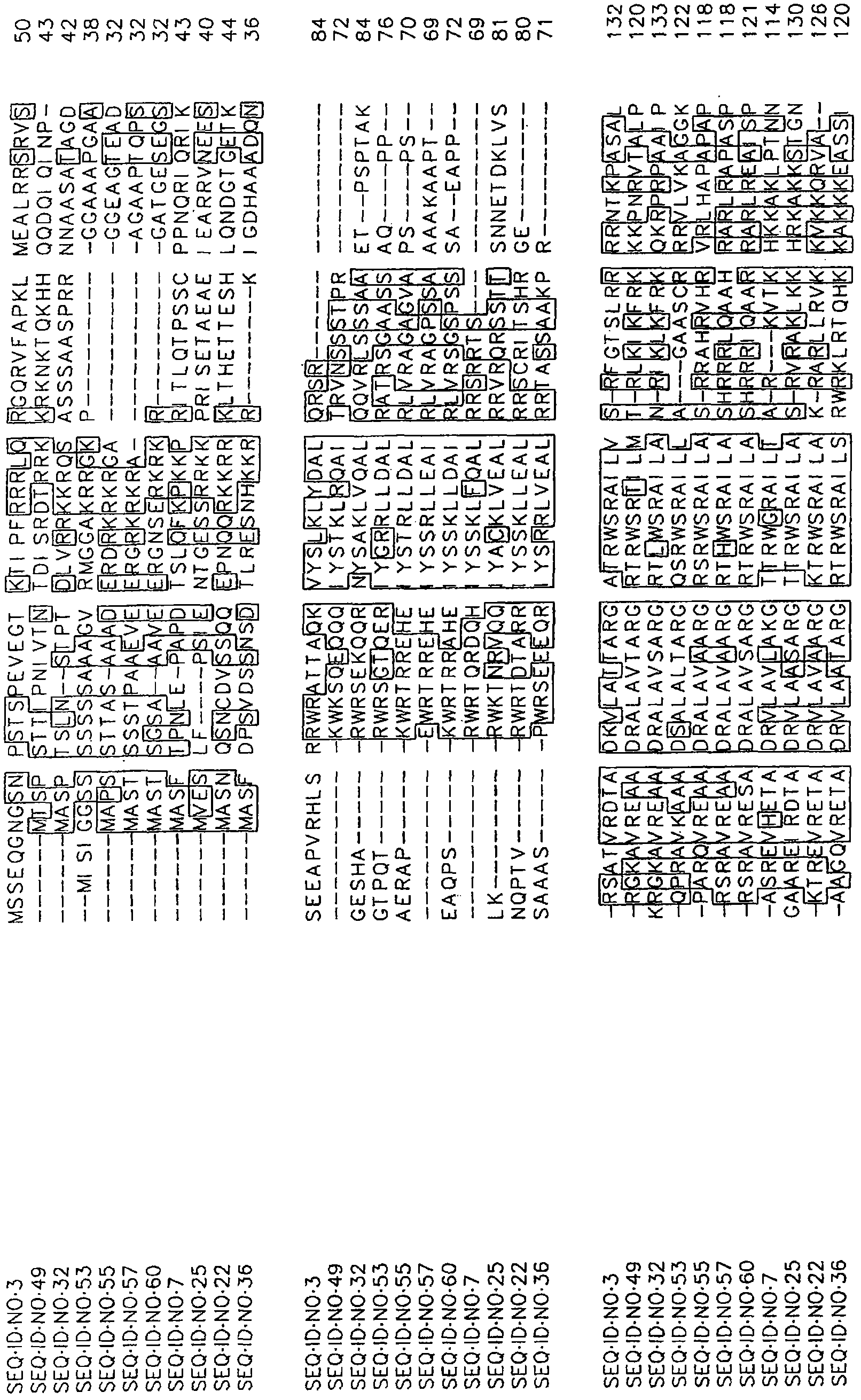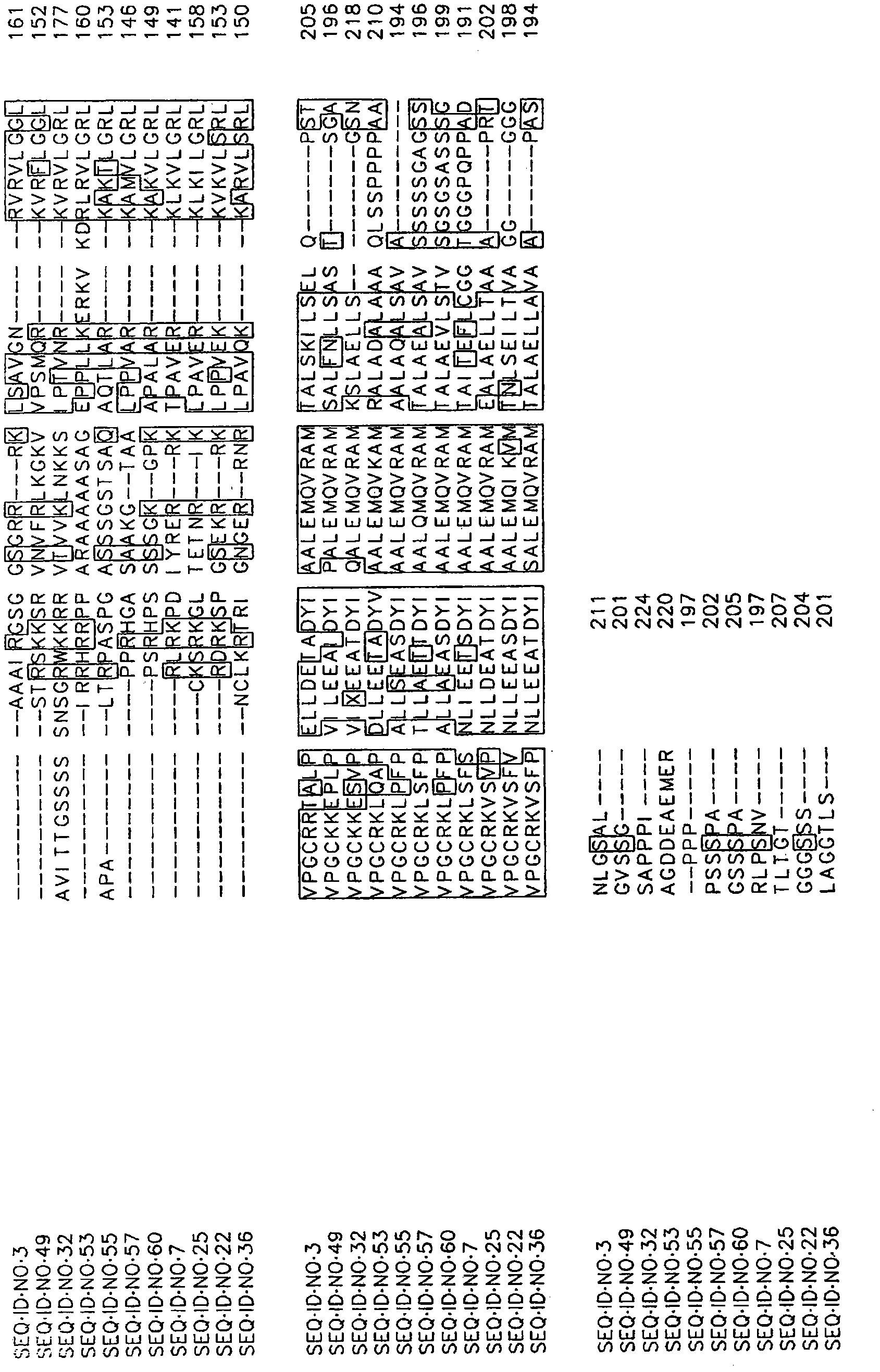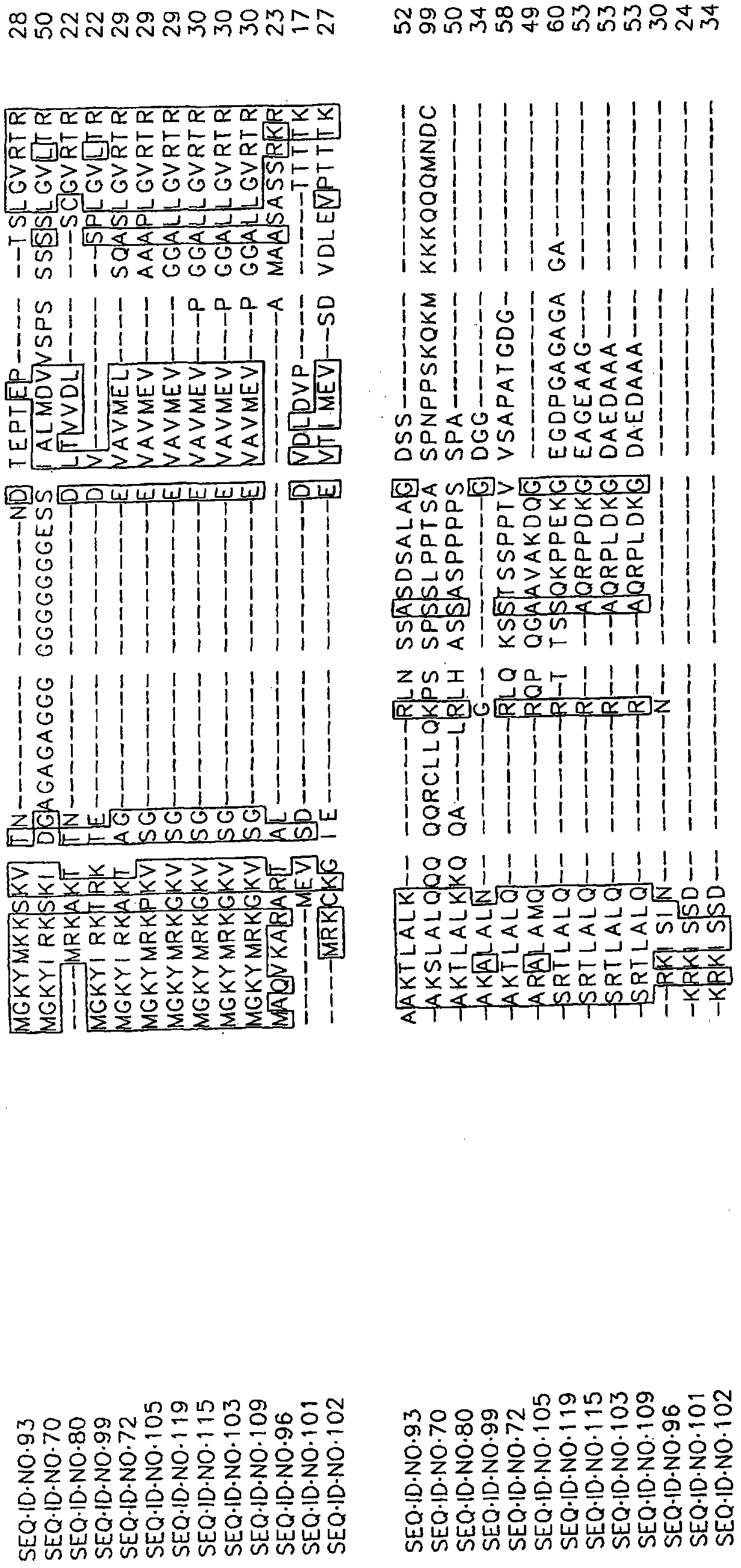Modulating light response pathways in plants
A technology of plants and plant cells, applied in plant peptides, plant cells, plant genetic improvement, etc., can solve problems such as easy lodging, low wind resistance, and reduced crop yield
- Summary
- Abstract
- Description
- Claims
- Application Information
AI Technical Summary
Problems solved by technology
Method used
Image
Examples
Embodiment 1
[0338] Example 1: Transgenic Arabidopsis Plants
[0339] The following symbols are used in the examples on Arabidopsis transformation: T 1 : first generation transformant; T 2 : The second generation, ie self-pollinated T 1 descendants of plants; T 3 : The third generation, namely self-pollinated T 2 descendants of plants; T 4 : The fourth generation, that is, self-pollinated T 3 descendants of plants. Individual conversions are called events.
[0340] Nucleic acids were isolated from Arabidopsis plants and cloned into Ti plasmid vectors CRS338 or CRS811 (under the control of the 35S promoter). Each construct contains the phosphinothricin acetyltransferase gene, which will Finale TM Resistance is conferred in transformed plants. Wild-type Arabidopsis ecotype Wassilewskija (Ws) plants were transformed separately with each construct. Transformations were performed essentially as described in Bechtold et al., C. R. Acad. Sci. Paris, 316: 1194-1199 (1993).
[0341] Co...
Embodiment 2
[0342] Example 2: Identification of transgenic plants tolerant to low light conditions
[0343] Wild-type and transgenic seeds were sterilized, partitioned on solid 0.5X MS medium containing 5 g / L sucrose, and stratified at 4°C in the dark for three days. After stratification, the plates containing the seeds were allowed to come to room temperature. Plates were then transferred to a Conviron walk-in growth chamber (Controlled Environments Inc., Pambina, ND) at 22°C and 70% humidity on a 16:8 hour light:dark cycle. Lighting was supplied by 32 watt fluorescent lamps (Sylvania, F032 / 841 / ECO, Danvers, MA) as long as the red:far red ratio was 13:1. Cover the plate with three layers of gobo cloth (New York Wire, charcoal fiberglass screen, 857650; Home Depot, Atlanta, GA) so that the irradiance is about 10 μmol / m 2 / s. Plates were rotated daily and changes in hypocotyl elongation were monitored. After 48 hours, plates were scored for late germinators, excluding them from candi...
Embodiment 3
[0345] Example 3: Identification of Transgenic Plants Tolerant to Short Days plus End of Day Far Red (SD+EODFR) Conditions
[0346] Seedlings were subjected to a short-day plus end-of-day far red (SD+EODFR) assay to assess the effect of SD+EODFR conditions on hypocotyl length. For the SD+EODFR assay, the seeds were distributed on 0.5% sucrose, 1X MS medium (PhytoTech) agar plates, cold-treated at 4°C for 3-4 days, and then allowed to grow at approximately 60 μmol / m 2 Germinate for 2 days in a walk-in Conviron growth chamber under continuous white light / s. The seedlings were then exposed to SD+EODFR conditions for 4 days. The SD+EODFR condition was 9.5 hours of light, followed by a 30-minute pulse of far-red light at the end of each light cycle, alternating with 14 hours of darkness. Use about 60 μmol / m for light cycle 2 Two Gro-Lux (Sylvania, 24660) and two cool white (Phillips) lamps (where the red:far red ratio is about 5.5) for / s PPFD; the fluence rates for these cond...
PUM
 Login to View More
Login to View More Abstract
Description
Claims
Application Information
 Login to View More
Login to View More - R&D
- Intellectual Property
- Life Sciences
- Materials
- Tech Scout
- Unparalleled Data Quality
- Higher Quality Content
- 60% Fewer Hallucinations
Browse by: Latest US Patents, China's latest patents, Technical Efficacy Thesaurus, Application Domain, Technology Topic, Popular Technical Reports.
© 2025 PatSnap. All rights reserved.Legal|Privacy policy|Modern Slavery Act Transparency Statement|Sitemap|About US| Contact US: help@patsnap.com



